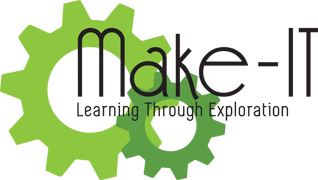| Challenge Activities |
|
| |
| Download a PDF file of Sound Insulator Challenge Activity. |
| Grade Level: |
Science content statement addressed: |
| Elementary |
Physical Science
Light, Sound and Motion
Light and sound are forms of energy that behave in predictable ways |
| |
|
| Overview: |
| Students are asked to design a Sound Insulator using only available materials. Below an alarm clock or cell phone are suggested for the device whose sound will be measured. However don’t limit yourself to these two possibilities. You may think something else or there may be a real scenario within your classroom or school where a “sound insulator” would be of benefit. |
| |
| Materials: |
-
Soundproofing materials suggested and brought in by students (cotton balls, fabrics, newspapers, packing peanuts, etc.)
OR
Provided in maker space specifically for project. Students theorize with their partner which material they will choose that they feel will be most effective.
-
Other found materials that students want to include in their design, approved by teacher
-
Small box to hold alarm clock. ( a cell phone ringing might be a good realistic challenge if doable. If using a cell phone preset volume level and ring tone. Someone will need to “call” the phone for each sound test.
-
Alarm clock or Cell Phone.
-
Decibel reader to measure the amount of sound (optional – about $30 at an electronics store or general department superstore)
-
Decibal apps for iPad
Decibel 10th: Professional Noise Meter FREE
*Decibel reader pro for ipad $0.99
*make sure there is a “test site” set up. Have a designated spot where the student will set the prototype. Set up the decibal reader or ipad with decibal reader app on it in a fixed location to the test site.
|
| |
| Procedure: |
Have students work in pairs
Students research soundproofing materials
Create a design for their soundproofing prototype
Build the prototype
Conduct three soundproofing tests.
After each test, students record how many decibels were detected. (using a spreadsheet would be a great tool to record data. Students could create a graph, and determine average based on the data recorded on the spreadsheet).
Allow students to reflect for a set amount of time on any modifications they may wish to make to reduce decibels detected. (suggest no more then 10-15 minutes)
Conduct additional test/reflect/test until set number of “Sound tests” have been conducted. |
| |
| Assessment: |
Students learn that sound waves are forms of energy that can be controlled in predictable ways. They will be able to articulate what variables affected how the amount of decibels detected outside the sound insulator. |
| |
| Post-Project Classroom Discussion/Activities: |
Which Sound Insulators worked the best?
Did they have anything in common with their design or the materials that were used?
What can you conclude about sound based on the results and observations. (together write a conclusion...sound travel is affected by…) |
| |
Used with special permission from STEM is Elementary
Modifications to original lesson done by Western Reserve Public Media. |

